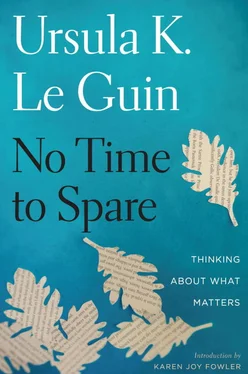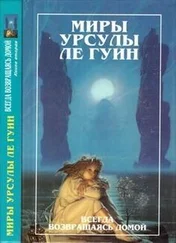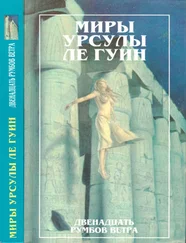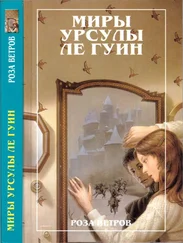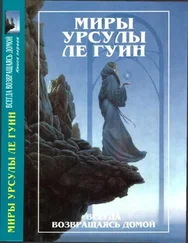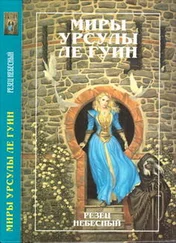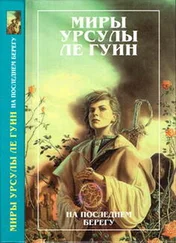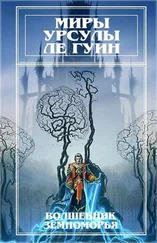For these towering walls and blocks and reefs of goods—twelve to eighteen thousand pounds of food in each bay of the warehouse—will vanish, melt away like sandcastles, tonight or in a few days, to be replaced instantly by the supply of boxed, canned, glassed, fresh, and frozen food, which in turn will melt away in a day or a week, going where it’s needed.
And that’s everywhere. The Food Bank distributes in every county of the state of Oregon plus one county of Washington State. They don’t have to look far to find people who need help getting enough to eat.
Anywhere kids are, to start with. Many school-age children in our country, towns, and cities don’t get three meals a day, or even two. Many aren’t always sure if they’ll get anything to eat today at all.
How many? About a third of them. One child in three.
Put it this way: If you or I were a statistic-parent with three statistic-kids in school, one of our three children would be hungry. Malnourished. Hungry in the morning, hungry at night. The kind of hungry that makes a child feel cold all the time. Makes a child stupid. Makes a child sick.
Which one of our children… which child…?
January 2011
WE TOOK DOWN the Christmas tree this morning. It was a very pretty little fir, three and a half or four feet tall, a tabletop tree, said the woman at the florist’s next to Trader Joe’s, where we bought it. We put it on a wooden box in the corner window of the living room, as I believe a Christmas tree should be seen from outside and also should be able to see outside. To be exact, I don’t think a tree can see, but it may be aware of light and darkness, of insideness and outsideness. In any case it looks right with the sky over it or through its branches. Before we decorated it, it stood there, sturdy, plain dark green, a complicated higher organism, a very definite presence in the room. When we had an artificial tree, its nonentity made me realize what I feel about a living tree, not only the splendid, big, tall Christmas trees we used to have when I was a child and when my children were children, but a little one too—that it is as much a presence in a room as a person or an animal. An unmoving presence that says nothing, but is there. A very taciturn visitor from Norway, perhaps. Speaking no English, entirely undemanding, wanting nothing but a drink of water every few days. Restful. A pleasure to look at. Holding darkness in it, a forest darkness, in the green arms held out so calmly, steadily, without effort.
Our Norwegian visitor leaned out into the room a little—we couldn’t get it quite vertical with the screw pins in the base—but nobody could see it from the side anyhow, as it stood between the writing desk and the bookcase, so we didn’t worry. It was beautifully symmetrical without having had half its branch-tips sheared off with a hedge trimmer, as lot trees so often have. It certainly was a lot tree. It had never been in the forest I saw in it. It had grown on some slope not far from Mount Hood, probably, along with hundreds or thousands of other young firs in straight rows, one of the dreariest sights in our farmlands, almost as soul-blighting as a clear-cut. It is often a sign of the small farmer giving up crop-growing, crowded out by agribusiness, or the nonfarmer putting in a tree lot as a tax write-off. Our tree had not known forest. It was a forest tree all the same. And it had known rain, sun, ice, storm, all the weathers, all the winds, and no doubt a few birds, in its day. And the stars, in its night.
We put the lights on the tree. We put the old golden bird with the ratty tail on top. The small gold glass snail-shell ornaments we bought for our two-foot tree in Paris in ’54, a dozen of them and a dozen gold glass walnuts—one walnut left, and nine snails, one with a hole in its tissue-fragile shell—go on the top branches, because they are small and weigh nothing and you can see them there. The bigger glass balls, some of which are so old they are crazed and translucent, go lower down; the bigger they are the lower they go, it is a rule of life. The little beasts, tigers and lions and cats and elephants, dangle on loops from the branches; the little birds sit up on them, clutching with unsteady wire claws. Now and then a bird loses its grip and is found upside down under its branch and has to be reseated.
The tree looks very nice, a proper Christmas tree, except the LED lights are really much, much too bright for it. They are small but violent. Old-fashioned frosted lights, too big for this tree, would suit it better, with their soft, diffuse glow which you could hide among the branches. And some of the colors of the LEDs are terrible; a screaming magenta is the worst. What has magenta to do with Christmas, or anything else? I’d take off all the magentas and airport-landing-strip blues and have it green red and gold, if I could, but the strings come with five colors, and they don’t seem to sell replacement lights, you have to buy a whole new string, which will, of course, have the same five colors. I made little tubes of tissue paper and slipped them over the small, fiercely glaring bulbs, but it didn’t make much difference, and it looked kind of crummy. All the same I left them on.
So Christmas came, and the tree shone each day and each night until I unplugged it before going to bed. I know you don’t really have to turn the lights off, LEDs burn so cool, but safety is safety, and habit is habit, and anyhow it seems wrong not to let a tree have darkness. Sometimes after I unplugged it I stood with it and looked at it, silent and dark in the dark room, lit only by the glow of the small electric candle behind it that illuminates the sign in the window that says PEACE. The candle cast faint, complicated shadows up on the ceiling through the branches and needles. The tree smelled lovely in the dark.
So Christmas went, and the New Year came, and on the day after New Year’s Day I said we ought to take the tree down, so we did. I wanted to keep it one more day after we took the lights and ornaments off. I liked the tree so much without any decorations. I didn’t want to lose that quiet presence in the room. It hadn’t even started to drop needles. But Atticus is not one for half measures. He took the tree out into the garden and did what had to be done.
He has told me that when it came time for his father to kill the pig he’d raised by hand all year, he’d hire a man to do it, and would leave the house and not come back till the sausage was being made. But Atticus did this deed himself.
After all, the tree had already been cut from its root; its life with us was only a slow dying. A real Christmas tree, a cut tree, is a ritual sacrifice. Better not to deny the fact, but to accept and ponder it.
He saved me some of the dark branches to put in water in a bowl in the front hall. When the trunk dries out it will be good firewood. Next Christmas, maybe.
January 2011
ON THE EVE of Christmas Eve the family was all out in the forest where my daughter and son-in-law and three dogs and three horses and a cat live. Three of them live in the horse barn and the pasture at the top of the hill, five of them in the log-cabin-style house at the bottom of the hill, and one of them in great style in a studio cottage with a heating pad all her own, which in winter she deserts only to hunt mice in the woods. That afternoon it was raining, as it had been all December, so everybody was inside, and the kitchen-living-dining room was pretty full of people, the eldest eighty-three and the youngest two.
The two-year-old, Leila, was visiting with her mother and her step-aunt from Toronto. Seven of us had come over for the afternoon, and six were staying there—the hosts upstairs, the Torontans in the study, and one hardy soul out in the trailer. (There is no bed in the studio cottage and Mimi does not share her heating pad.) The dogs were circulating freely among us and there were many good things to eat, arousing much interest in the dogs. For anybody as young as Leila, it must have seemed pretty crowded and noisy and full of strangers and strangeness, but she took it all in with bright eyes and sweet equanimity.
Читать дальше
